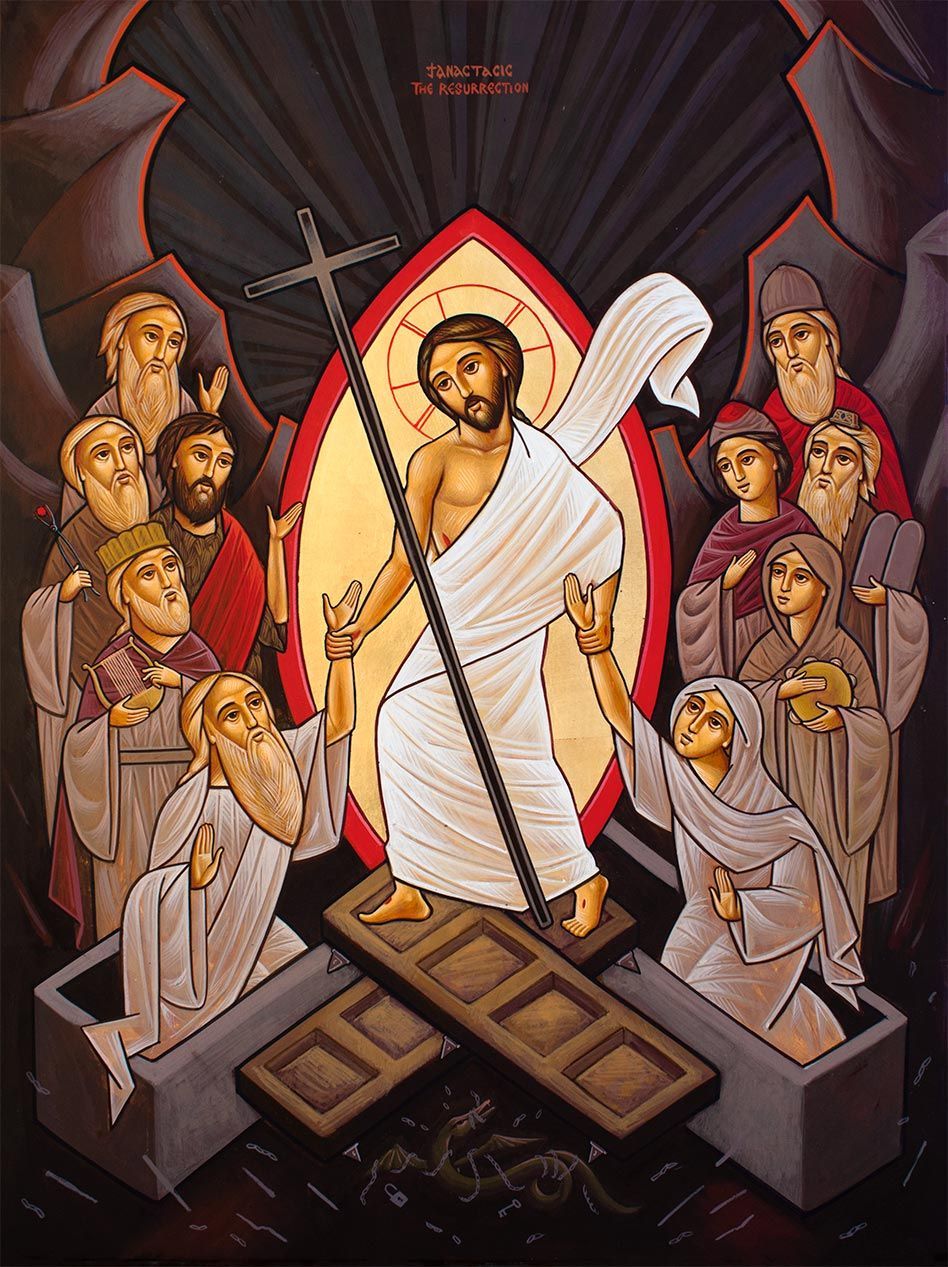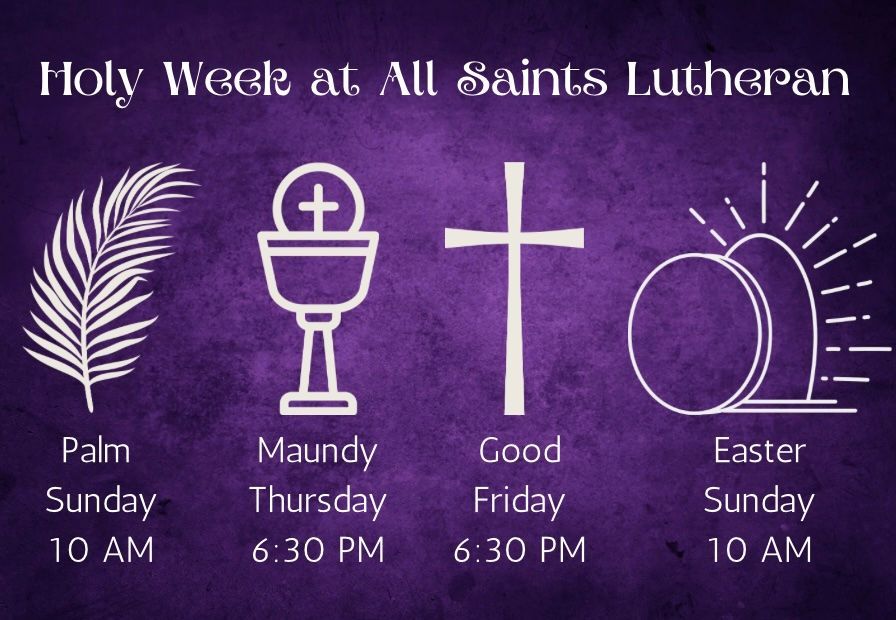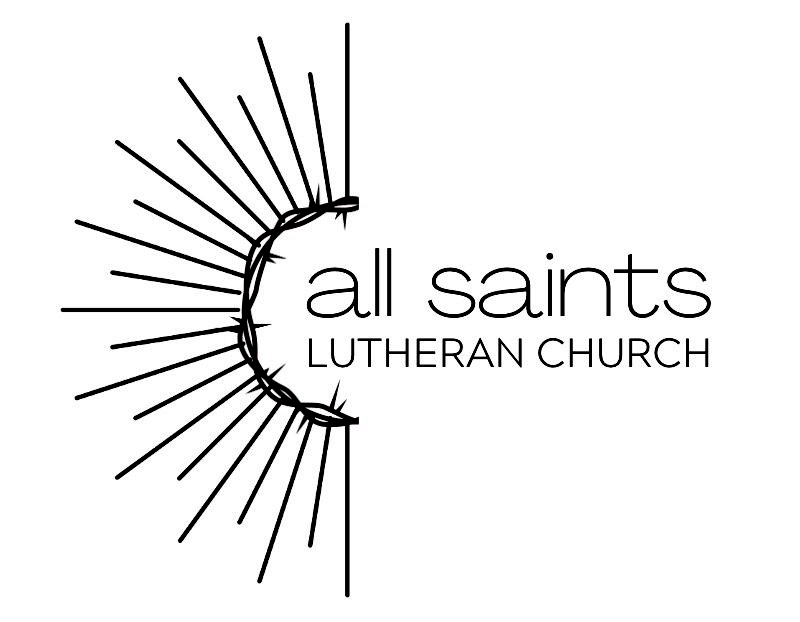Sermon for Easter Sunday, April 9, 2023
There is a lot of good-natured teasing
in the way we celebrate birthdays,
especially for children.
I remember being chased around the party
by an aunt
who was intent to give me a birthday spanking,
always adding “and one to grow on.”
We wear silly hats,
play silly games,
and perhaps worst of all,
we sing an atonal rendition of “Happy Birthday”
while making sustained eye contact,
and hoping for cake.
One question I was always asked,
especially now
that I have passed a couple of milestone birthdays,
was “Do you feel any different?”
As an 8-year-old,
my answer was most certainly “no.”
As a 30-year-old,
the answer was “physically, yes.”
As a 40-year-old,
the answer was, “hand me the anti-inflammatory!”
And I guess it’s all downhill from here, right?
It seems like maybe
we approach Easter
much the same way
we approach birthdays.
Instead of funny hats
we buy a new outfit.
Instead of silly games
we hunt for colored eggs.
Instead of “Happy Birthday”
we sing “Here Comes Peter Cottontail.”
And the older we get,
maybe we have come to believe
that Easter is a young-person’s holiday,
when hope is fresher,
when the songs and games don’t seem so silly,
when haven’t experienced more death and disappointment
than we have experienced resurrection and astonishment.
In fact,
This Easter,
Do you feel any different?
Do you feel hope and wonder?
Or have you left those things
like party hats
and pin the tail on the donkey
with the naivete of childhood?
Author and Duke University professor
Kate Bowler,
in her recent guide for Lent,
guesses that maybe we
can relate more to the rejection of Maundy Thursday
when Jesus is betrayed by his friend.
Or maybe [we] relate
to the grief of Jesus’ gruesome death
on Good Friday
with [our] own tear-soaked pillow.
Or maybe [we] relate
to the utter despair of Holy Saturday
as [we] wait in unhope
for a life that never seems to get any better.
It is against these realities of our humanity
[that] we walk into Easter season yet again.[1]
In the less than 25 years since I graduated high school
the ground beneath my feet
has shifted several times.
There have been seismic shifts
in culture,
in politics,
in our personal lives.
Think about the news just this week!
Every day was some new cataclysm,
some new outrage,
some new reason to lose hope
that things will ever get better.
I heard one journalist say
that when he was in school
he was cautioned against using the word
“unprecedented”
because if you thought something was unprecedented
it likely just meant
that you hadn’t done enough research.
But over the course of his career,
especially in the last 8-10 years,
more and more events had occurred
that were really and truly unprecedented.
Kate Bowler again,
most of the time, nothing makes sense.
Our hearts are broken beyond repair.
We toss and turn in our unsolvable grief.
The people we love are lost.
The rug is yanked from under our feet.
Maybe this Easter
doesn’t feel like Easter,
doesn’t feel like hope and faith.
Maybe you’ve assumed at this point
that resurrection is something
that happens to other people.
Maybe the crucifixions you’ve witnessed
or the crosses you’ve borne,
have been too real,
too gruesome,
too frequent,
to imagine that something like a resurrection
is even possible.
It’s something we can wish for
while we blow out our candles,
like justice or world peace,
but it doesn’t feel real
or practical.
And this is exactly where we find Mary Magdalene
and the other Mary this morning.
They have witnessed the crucifixion,
and they have observed the Sabbath,
sitting with their grief in ritual inactivity
until here,
while it was still dark,
they make the trek to the tomb,
guarded by the very men who had killed Jesus.
When suddenly,
the ground beneath their feet shifts again.
The stone rolls away,
the guards flee in fright,
and an angel shines a supernatural light
into the early morning twilight.
They are afraid,
confused,
paralyzed by uncertainty
as to what is happening.
Their arms are filled with spices and linen,
their hearts are filled with grief,
their eyes with tears,
their minds with images of crucified bodies,
and yet,
here they stand on the shaky ground of resurrection
trying to grapple
with what they’re being told.
He’s not here?
He’s in Galilee?
Why would the disciples believe me?
And yet, as they turn to go,
there he is,
in the flesh,
close enough to touch.
They fall on his feet,
worshipping him,
and he tells them the same thing the angel said.
“Go to Galilee,
I’ll meet you there.”
Sometimes,
the resurrection will interrupt us,
shake the ground beneath us,
blind us with its light,
bring us to our knees in worship.
Other times,
the resurrection is slow and hidden,
only known by those acquainted with grief,
those who have been to Hell and back.
Sometimes,
we will have to look for the risen Christ
where he tells us to meet him.
We will meet Jesus in “the least of these.”
We will experience resurrection in the hungry
when we feed them.
We will experience resurrection in the thirsty
when we give them something to drink.
We will experience resurrection in the naked
when we clothe them.
We will experience resurrection in the sick and imprisoned
when we visit them.
We will experience resurrection
in the cool waters of the font.
We will experience resurrection
in the bread and wine on this table.
We will experience resurrection
in the Good News
and in the pew beside us.
So,
if this Easter
you don’t feel any different,
“go to Galilee”
go to all the places Jesus promised to meet us,
go in the darkness of your grief or unbelief
and see if resurrection isn’t shaking the world,
breaking open tombs,
tearing down the gates of Hell,
and looking for you.
Amen.
[1] Ibid.








